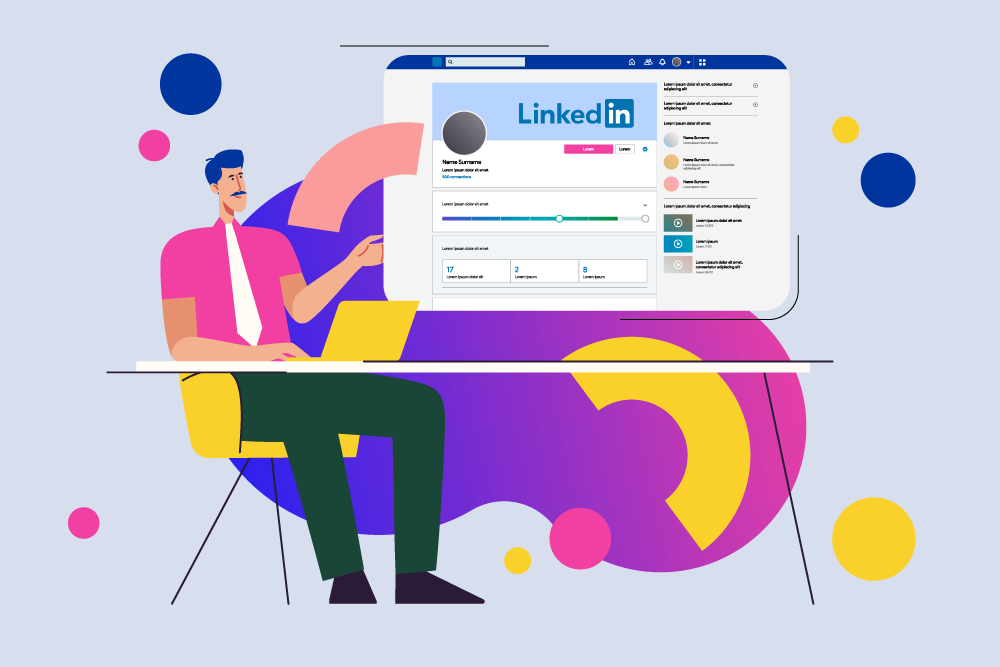Building connections on LinkedIn is only the first step in professional networking. The true challenge lies in transforming those connections into meaningful business relationships and, ultimately, into clients. Unlike traditional networking, LinkedIn offers direct access to decision-makers, but success requires strategy, authenticity, and consistency.
The most effective lead generation strategies don’t rely on random outreach or quick wins. Instead, they guide connections through a process that builds trust and demonstrates value. By aligning your profile, content, and communication, LinkedIn can evolve from a contact list into a powerful system for client acquisition. With the right approach, connections become conversations — and conversations become long-term business opportunities.
Why Connections Alone Aren’t Enough
Growing a large network may seem like progress, but true success lies in what those connections actually lead to. A number on your profile is only the beginning — the real measure of effectiveness is how those connections translate into conversations, collaborations, and eventually business outcomes. Without a clear strategy for nurturing relationships, even the largest networks remain passive and underutilized.
Visibility Doesn’t Guarantee Engagement
It’s easy to assume that having thousands of connections automatically leads to better visibility and opportunities. While your posts may appear in more feeds, that doesn’t mean people are paying attention. A large network without consistent engagement often results in shallow reach — your updates may be seen but not acted upon. The real value emerges when you interact with your connections, respond to their content, and create reasons for dialogue. Engagement, not sheer visibility, is what builds momentum.
Trust Is the Deciding Factor
At the heart of every business relationship is trust. Professionals don’t agree to partnerships or purchases simply because someone is connected to them — they decide based on credibility and confidence in your expertise. Trust is built through ongoing, consistent interaction: sharing useful content, responding thoughtfully, and demonstrating reliability over time. Even highly relevant connections will hesitate to move forward if they don’t feel secure in your capabilities. This makes nurturing as important as growing.
From Numbers to Relationships
Connections represent potential, but relationships create results. Turning numbers into outcomes requires effort, patience, and authenticity. A smaller, engaged network often outperforms a large but inactive one. Professionals who focus on building meaningful exchanges rather than chasing metrics tend to generate stronger, longer-lasting opportunities. Ultimately, the strength of your LinkedIn presence is measured not by how many connections you have, but by how many of them would recognize your value and trust you enough to collaborate.
Step 1: Optimize Your Profile for Client Attraction
Your profile acts as the foundation of your lead generation funnel.
Craft a Headline That Highlights Value
Instead of only stating your role, create a headline that explains how you help others. This signals relevance and makes prospects curious to learn more.
Build a Story in the “About” Section
A strong narrative about your background, expertise, and achievements makes your profile memorable. This is your chance to connect emotionally as well as professionally.
Add Proof of Expertise
Endorsements, recommendations, and visible activity show credibility. Prospects reviewing your profile should see clear evidence of results.
Step 2: Engage With Content That Builds Authority
Content bridges the gap between being a connection and being seen as a trusted advisor.
Share Insights and Perspectives
Posts that explain trends, challenges, or lessons learned position you as someone who understands the industry. Authority is earned through consistent knowledge-sharing.
Use Storytelling for Relatability
Real-world examples or short case stories demonstrate practical expertise. Storytelling makes abstract skills tangible and memorable.
Respond to Audience Engagement
When people interact with your posts, reply thoughtfully. Engagement demonstrates approachability and builds stronger relationships.
Step 3: Leverage LinkedIn Tools and Features
Smart use of LinkedIn features helps strengthen your funnel.
Using a LinkedIn Automation Tool
Managing outreach at scale is difficult without structure. Linkedin Automation helps schedule follow-ups, track responses, and manage requests efficiently. When applied carefully, it supports consistency without removing personalization. LiProspect, for example, is often mentioned as a tool professionals use to streamline their approach while keeping outreach authentic.
Understanding LinkedIn Communication Dynamics
Questions like does linkedin have read receipts highlight how professionals think about communication transparency. While LinkedIn doesn’t offer full email-style read receipts, features such as message indicators and activity signals provide clues. Using these insights helps guide timing for follow-ups and ensures messages are delivered at the right moment.
Step 4: Turn Conversations Into Client Opportunities
Outreach success lies in creating genuine dialogue, not direct selling.
Start With Value-Driven Messages
Open conversations by offering insights, feedback, or resources. Messages framed around giving, rather than asking, are more likely to be welcomed.
Ask Questions That Invite Discussion
Simple, thoughtful questions encourage prospects to share challenges. This positions you as a problem-solver instead of a salesperson.
Transition Naturally Into Business
When a relationship shows potential, suggest next steps such as a short call or collaboration discussion. Keeping the tone collaborative helps prospects feel comfortable.
Step 5: Nurture Relationships for Long-Term Success
Conversions rarely happen instantly; consistent nurturing builds client trust.
Follow Up With Context
Instead of repeating earlier outreach, reference recent activity or shared interests. Personalized follow-ups feel considerate and timely.
Maintain Steady Visibility
Occasional likes, comments, or shared resources remind prospects of your presence without overwhelming them.
Keep Client Relationships Human
Beyond business, showing genuine interest in someone’s professional journey strengthens bonds. Clients are more likely to engage when they feel understood.
Avoiding Common Lead Gen Mistakes
Not every strategy works — and certain missteps can derail progress.
Over-Reliance on Automation
Automation is helpful, but should never replace human connection. Personalized touches remain essential.
Aggressive Pitching Too Early
Jumping into sales discussions too soon creates resistance. Relationships need time to grow before business enters the conversation.
Ignoring Profile Optimization
Even strong outreach falls flat if your profile doesn’t inspire trust. Treat your profile as an active part of the funnel.
The Ending Note
The ultimate lead generation strategy on LinkedIn isn’t about chasing connections — it’s about guiding them into meaningful, long-term business relationships. By optimizing your profile, sharing value-driven content, and engaging authentically, you transform casual connections into warm prospects.
Smart use of tools like automation platforms makes scaling possible, while thoughtful communication ensures each interaction feels personal. Even simple signals, such as activity indicators in messages, can shape how and when you follow up. The combination of structure and sincerity creates a reliable process for growth.
In the end, LinkedIn offers more than a platform for networking — it provides a system where conversations become collaborations and connections evolve into clients. With consistency and care, it becomes the most effective tool in building a sustainable pipeline of professional opportunities.



